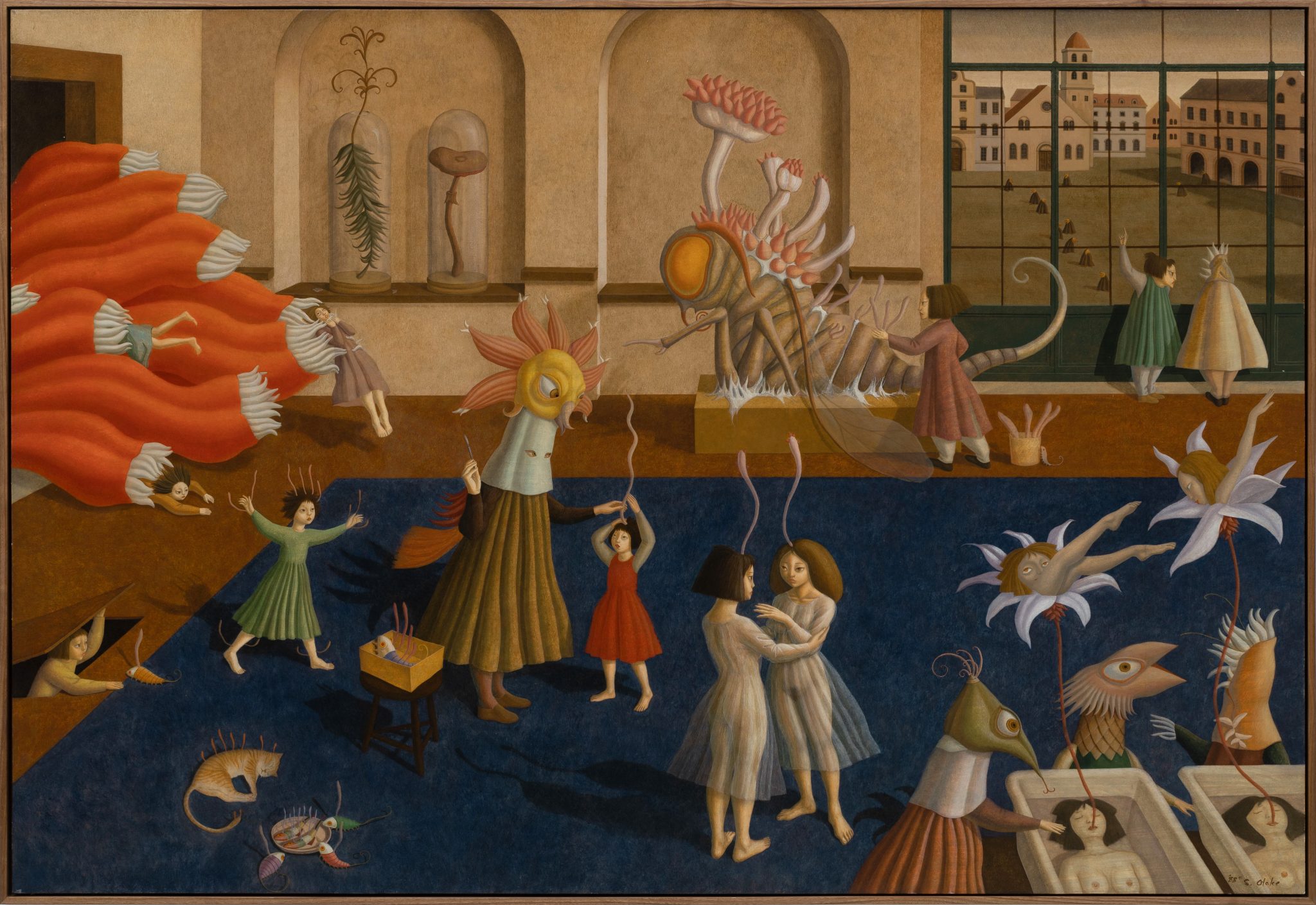The mycology boom takes a dystopian turn in the Japanese artist’s horrifying allegorical paintings of humanity’s decay
Wandering through Fungitopia sends a chill down my spine. At first glance, there is nothing particularly freaky or terrifying about Shigeo Otake’s 37 tempera-and-oil paintings filled with kawaii Ghibli-style figures, but a closer look reveals a sinister dreamscape teeming with hybrid monsters and delusional humans. Narratives of death and destruction underpin the cartoonish style and vivid colour palette. Like a Hieronymus Bosch painting, the devil is literally in the details.
Otake spent much of his career studying cordyceps, a parasitic fungus found in shrines near his home in Kobe, Japan. Entranced by the plant’s lethal allure, Otake’s focus turned to the eerie fungal world during the 1980s. In his short story ‘The Birth of Fungal Generation’ (c. 2000), Otake details the ‘history’ behind a practice that is on full display in Fungitopia: in a hypothetical future, the deadly cordyceps has preyed on all organisms and turned them into fungal hybrids. Humanity evolved and adapted through fungi’s parasitic spread, forming a new species: sentient mushroom-humans who strove for a new organic kingdom. This dystopian prospect is alluded to in Miscalculation by mycologist H.A (1988), one of the largest paintings on display. A teacherlike figure dresses in a pleated skirt, her face concealed by a mask, on top of which perches a bird head with feathers made of mushroom gills. Waving a scalpel, she seems ready to cut a hypha sprouting from a child’s head, which appears to be turning into a mushroom. Surrounding the two figures are a poisoned cat with hypha sprouts, women-faced flowers growing from the mouths of two naked girls drowned in bathtubs, and monstrous coral fungi chewing on little humans. Despite its orderly composition and vibrant colours, the painting is permeated with horrifying processes of fungal integration beyond our control.

This allegorical reality points to a perverted prosperity born out of the decomposition of our current world order. Scenes of the nonchalant character’s (and perhaps our own) slow death and self-alienation unfold in modern institutions such as city halls, museums (Secrets of Natural History Museum, 1987; This Place is Connected to the Sea, 1997) and even a brothel in Japan’s red-light district (Tender Love, 2010). Are these places eliminating agency and perpetuating our Frankenstein’s monster inside? Otake also nods to religious themes in Road to Santiago de Compostela (1996) and Mushroom Nirvana (2019). Is he comparing the contemporary production of knowledge to religious indoctrination? I can’t decide. What makes Otake’s works even more relevant, post-COVID? They evoke, once again, our long estrangement from our own organic nature and bio-identity as just an element of the Earth. Evolution, the fight against disease and the fear of oblivion are timeless themes rooted in our subconscious. In the face of humanity’s destined decay, Otake hands us his own cruel optimism: we’ll embrace our survival and intellectual integrity, at the cost of becoming mushrooms.
Fungitopia at Hive Center for Contemporary Art, Beijing, 4 March – 16 April
